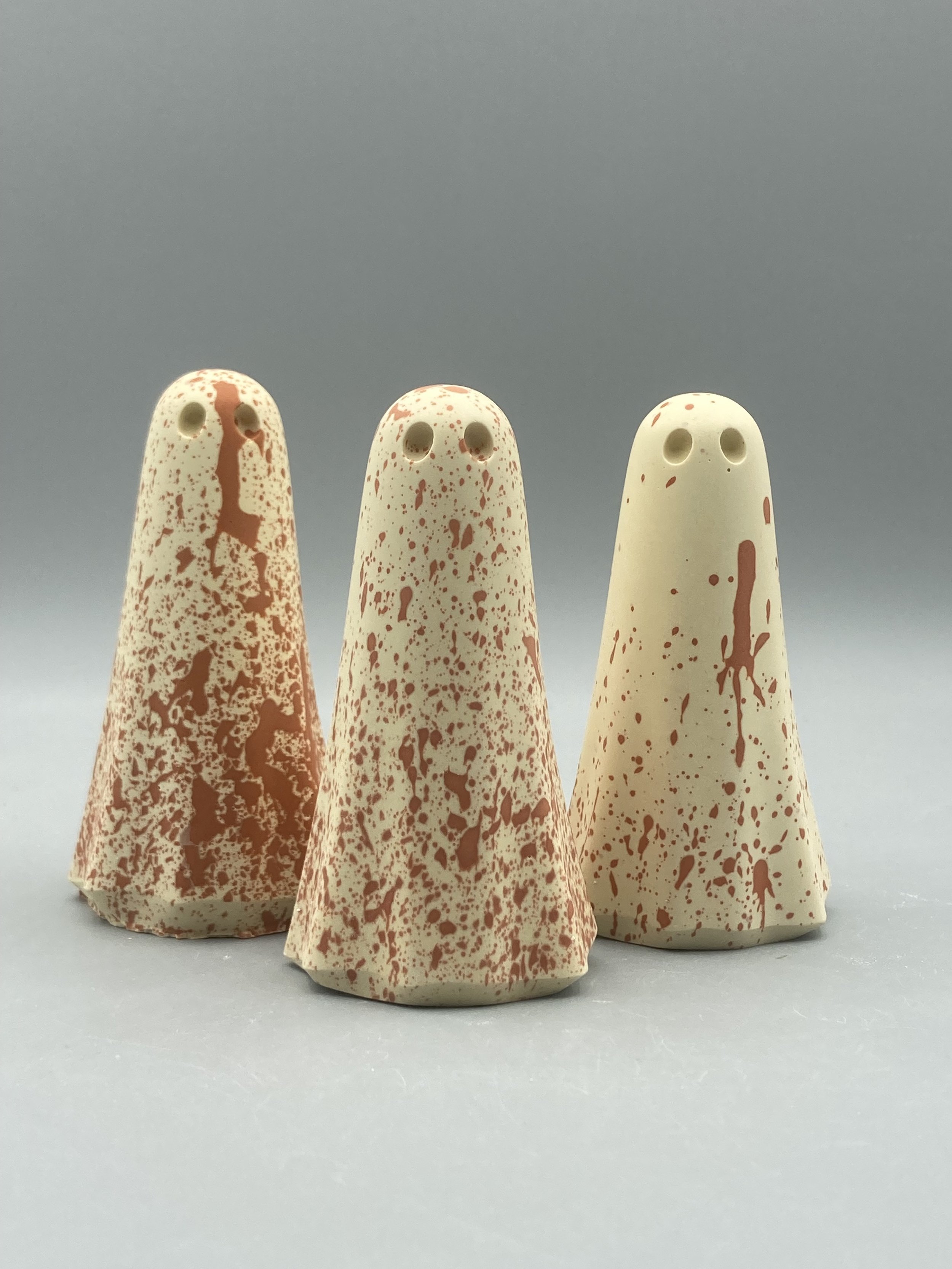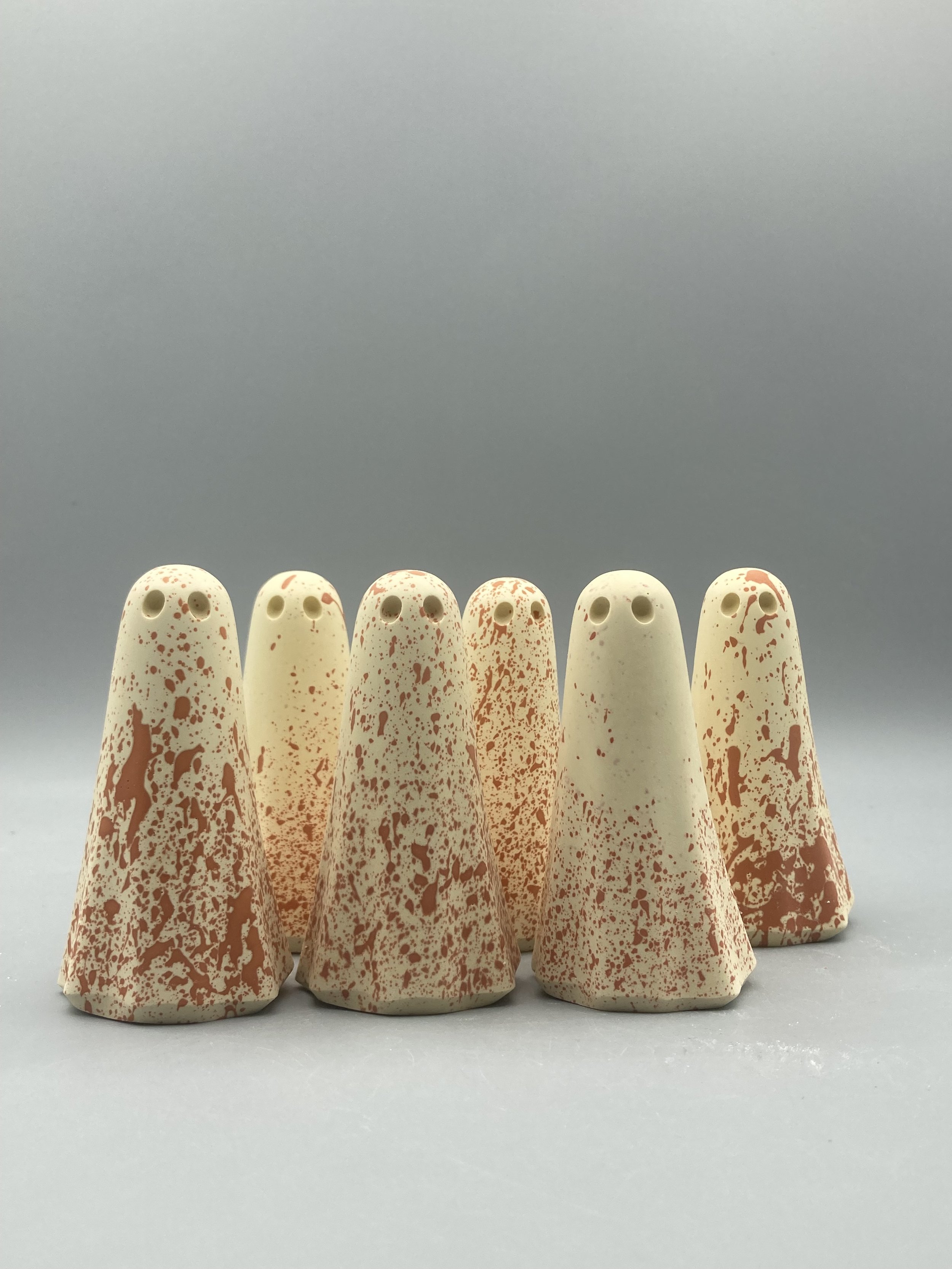


The Egg Collector / Spotted Flycatcher
A classification of Ghosts entitled The Egg Collector. { No.4 Spotted Flycatcher }
Buttermilk body with rust coloured peppered spots, streaks & splashes.
From the late 1700s until the late 1800s, governments, wealthy collectors, and large museums such as the British Museum of Natural History commonly funded expeditions around the world to procure bird’s egg specimens – the main goal being to describe and catalogue new species. These expeditions employed “field collectors” to acquire the eggs, and included many famous naturalists who also often published the results of their findings.
Egg-collecting became a mania in Victorian England amongst ornithology enthusiasts and collectors such as Lord Rothschild who amassed thousands of egg-sets in his curiosity collection. It became an increasingly popular practice throughout the Victorian Era as there was a growing interest in science and the value of factual knowledge over superstition and outmoded research methods. The scientific value of egg collecting began to wane as museums filled with samples and, by the dawn of the 20th century, the public viewed “eggers” as hobbyists rather than intellectuals. As the 20th century progressed, the number of collectors dwindled but the small cadre who still practiced often did so fanatically. Eventually, it became the consensus that they weren't just hobbyists, but posed a legitimate threat to some bird species. Legislation, such as the Protection of Birds Act 1954 and the Wildlife & Countryside Act of 1981 in the United Kingdom, has made it impossible to collect wild birds' eggs legally. In the United Kingdom, it is only legal to possess a wild-bird's egg if it was taken before 1954, or with a permit for scientific research; selling wild birds' eggs, regardless of their age, is illegal and we in no way condone it. The collection of birds egg Ghosts is not an illegal activity.
The Egg Collector Ghosts are in part inspired by the the book A Natural History of the Nests and Eggs of British Birds, 1853–6 by the naturalist Francis Orpen Morris. Rev. Morris was ordained as a priest in York in 1835 and served as a curate at various locations before settling in the rectory of Nunburnholme East Yorkshire where he stayed until his death in 1893. The illustrations of his book inspire the colours and patterns of our Egg Collector series. Egg Collector Ghosts are named after the bird who’s egg they are based upon. Over time some may be made as open releases while others may be sold “clandestinely”, all will be either stamped or bear a hand written text/number on the base. There may also be re-releases of certain eggs. The first clutch of 6 linnet egg Ghosts were sold on Easter Sunday 2022. Jackdaw was the second in this classification of Ghosts, followed by a clandestine batch of Goldfinch eggs earlier this week.
The “peppered & splashed” style of the markings on these Ghosts gives a unique and variegated pattern. The peppering and colours vary from Ghost to ghost exactly they do in each clutch of eggs so please be aware that your Ghost will not be precisely the same as the ones in the images, there is broader variety within this edition, with fine speckles and dynamic slashes making up the visual vocabulary.
Open order release Friday 17th March 7pm - 8pm BST
H 8.5 x D 5.5 x W 4.5cm
